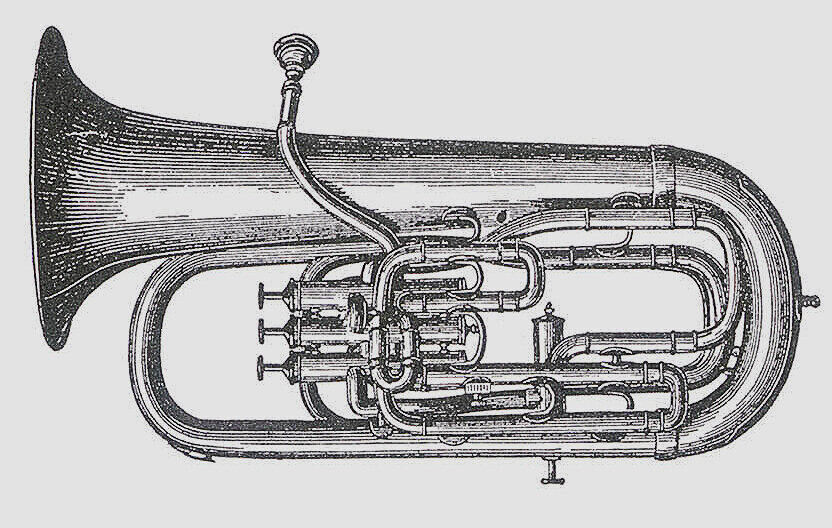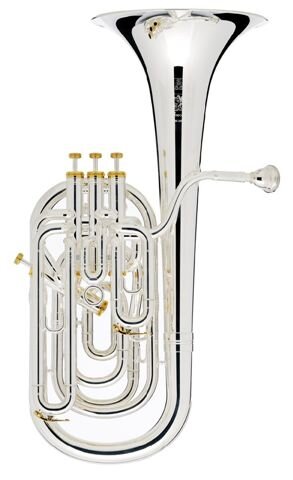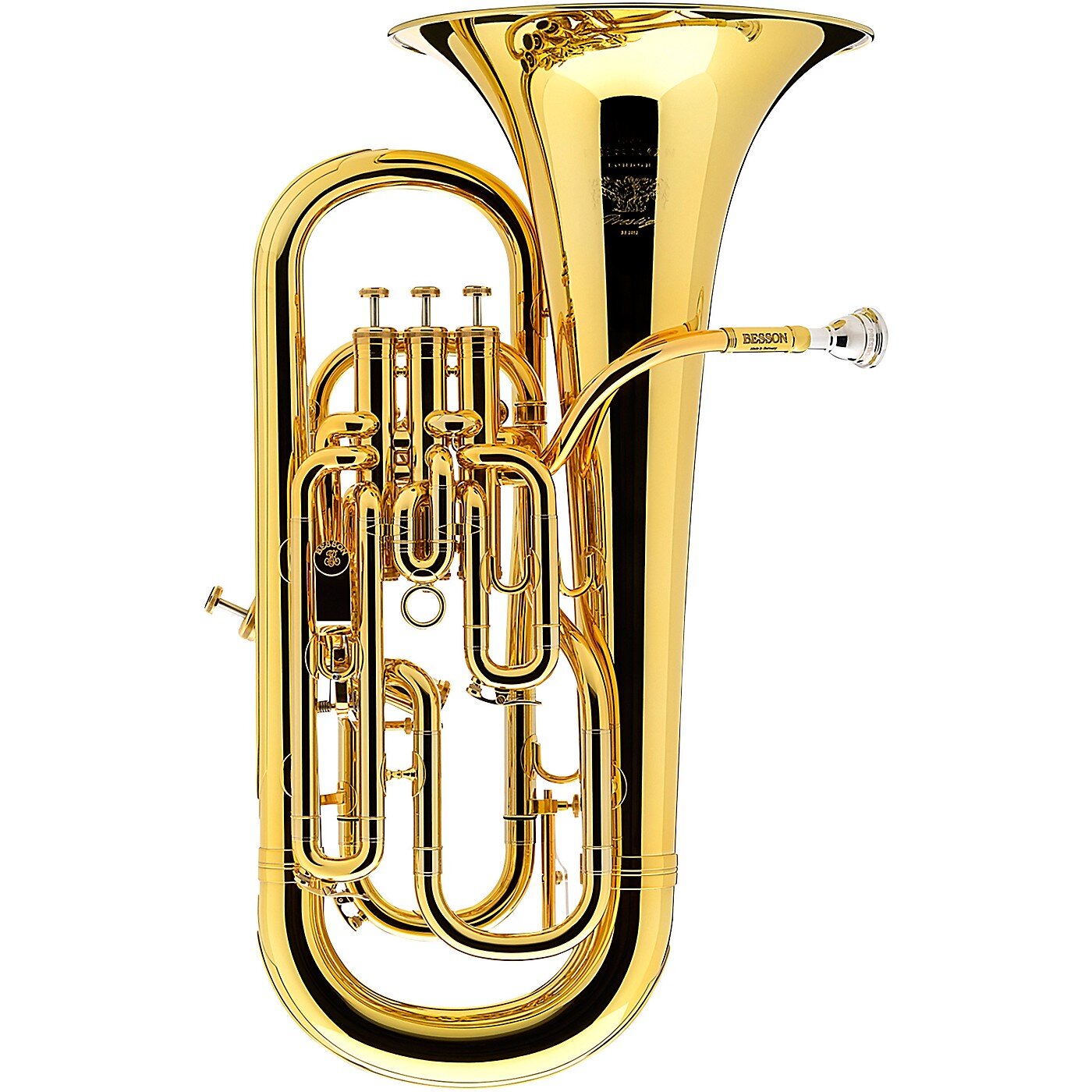
So What Exactly is a Euphonium?
Who plays it, What does it do, and How did it come to be?
Everything a layperson may want to know about the world’s sweetest-sounding tenor-voiced brass instrument.
The euphonium is a member of the tuba family, being pitched in Bb exactly an octave higher than the BBb contrabass tuba. This means the tubing of the instrument is half as long as in the BBb tuba, which gives the euphonium the approximate pitch range of a trombone, with some of the depth of sound and “openness” of the tuba.
The euphonium is a relatively recent addition to the repertory of instruments, as it was born out of the invention of the tuba, which was only created a little under 200 years ago. If you are interested in a detailed history of the tuba and its musical ancestors, I would recommend reading Clifford Bevan’s The Tuba Family, which details just about anything a person may want to know about the tuba and its relatives.
First thing’s first. Up until recently, instruments did not have valves. The reason bugle calls (Reverie, Taps, etc) sound like they do is because on a bugle that has no valves, those pitches are the only ones that can be played. In 1815 the piston valve was invented, which opened the door to endless possibilities for brass instrument manufacturers. After the tuba’s patenting in 1835, Carl Moritz built a modified tenor tuba in Berlin in 1838. The instrument was naturally higher pitched than the original 1835 bass tuba, which was already pitched in F - contrasting to the instruments you may see in school bands or orchestras, which are contrabass tubas and are pitched in CC or BBb.
The original Wieprecht/Moritz tuba, 1835
Image Source
Around the same time, instrument makers in other countries began to recognize the new possibilities offered by the piston valve, inventing instruments similar to Moritz’s tenor tuba (supposedly) unknowingly. Giuseppe Pelitti invented the Bombardino in 1835, the Hellhorn was patented by Ferdinand Hell of Brno, and in Italy the Flicorno Basso surfaced within the same decade. The subtle differences of the instruments was the beginning of a series of bizarre naming conventions for similar instruments which to this day is not totally resolved.
In 1843, the bore (tubing) of the tenor tuba was widened by Sommer of Weimar, giving the instrument a fuller and darker sound. Sommer initially called his invention the “Sommerophone,” but later the “Euphonion,” from the Greek euphonos, which means “sweet-sounding.” Terms around this time varied from region and instrument manufacturer, with similar instruments being called Baritonhorn, Bariton, Baryton, Tenorbasshorn or Tenorhorn. Adolphe Sax (famous for the saxophone) began constructing and patenting “Saxhorns” around 1845. The Bass Saxhorn was again much like the euphonium in construction, with the bore size and shape being the notable difference.
Bb Bass Saxhorn of 1863
Image Source
Modern Flicorno Basso
Poster showing the Sommerophone
Image Source
Since its inception, the bore size has been increased several times, which led to a split of the narrower-bore instruments and larger-bore instruments. Often the smaller and typically more cylindrical bore instrument is called a baritone or tenor horn, and the larger and more conical bore instrument is called the euphonium. In the United States, however, the terms baritone and euphonium are largely interchangeable, partially due to the manufacturers’ lack of distinction between the instruments. In an orchestral context, the tenor tuba part is often played by a euphonium, but the actual instrument called for can vary greatly.
A typical American-style baritone
Image Source
A British-style baritone
Image Source
An American-style euphonium
Image Source
A Modern Euphonium
Image Source
In 1874 Blaikley invented an automatic compensating valve system which corrected for discrepancies in intonation and allowed the low B to be playable on Bb horns without having to bend the pitch. [If you want to see an animated example of how valve systems work, click HERE.] A more recent advancement from Boosey and Hawkes in 2002 added a trigger that can be depressed to pull the main tuning slide while blowing the instrument, adjusting intonation on the fly.
By this point you may be asking yourself, “well that’s a neat history, but what does it DO?” The euphonium functions in an ensemble like the cello in an orchestra. It is an incredibly versatile instrument capable of up to a 5 octave range by professional players which has the depth of a tuba with the dexterity of a cornet. Typical ensembles that you may see the euphonium in are the wind ensemble and the British-style brass band. In the wind ensemble, the euphonium works many jobs. Sometimes it acts as a double to the tuba, sometimes as an extra trombone, another horn, and sometimes even as a member of the woodwind section with clarinets and saxophones. It often plays countermelodies and bass lines and is regularly featured as a solo instrument within the ensemble. Some famous examples of euphonium parts in the wind ensemble are in the final trio of The Melody Shop by Karl King, the solo in David Gillingham’s Be Thou My Vision, and the solo in Gustav Holst’s Second Suite in F.
In the brass band, there are two euphoniums and two baritones. The euphonium takes a central role, often playing virtuosic lines as main melody parts. The euphonium, with its conical bore, blends with the cornets and the baritone, with its cylindrical bore, blends with the trombones. In the brass band realm, competition is a big deal especially in the UK, so there exists a wealth of pieces for brass band designed to show off the virtuosity of the ensemble. See Peter Graham’s On the Shoulders of Giants and Hargreaves’ arrangement of Ruslan and Ludmilla Overture.
The euphonium is not typically a member of the modern symphony orchestra, although there are a fair number of notable pieces that have parts played by euphonium or a similar instrument. One of the first instances was in Richard Strauss’ Don Quixote (1897) and Ein Heldenleben (1898), where the parts were initially written for a Wagner Tuba (an instrument invented by Richard Wagner that is not a tuba and more akin to the horn). After a performance in Dresden in 1899 substituted a baryton, Strauss began to prefer the parts played on euphonium. Other important orchestral works are Gustav Holst’s The Planets in which the tenor tuba plays the call to war during the first movement, Mars. The solo during the Bydlo movement of Modest Mussorgsky’s Pictures at an Exhibition was originally written for the French C tuba, an instrument pitched a step higher than euphonium, but it is now commonly played on either euphonium or bass tuba. Another incredibly striking solo is the opening of the first movement of Mahler’s 7th Symphony, in which the tenor horn part is often played on a baritone.
Perhaps the area where the euphonium shines the brightest is as a soloist. During the “Golden Age of Bands” at the turn of the 20th century, players like Simone Mantia, Joseph Raffayola, Alfred Phasey (who was at first an ophicleide player), and Joseph DeLuca wowed audiences with their virtuosity and beautiful tone. The first solo for euphonium was Amilcare Ponchielli’s Concerto per Flicorno Basso, written around 1872 but only rediscovered in 1992 by Henry Howey. This work, as well as many of the turn-of-the-century solos are in a theme and variation format, with each variation typically getting faster and more virtuosic (see also: Carnival of Venice; Believe Me, if All Those Endearing Young Charms; Fantasie Originale). By now, many serious works have been written for the euphonium, primary amongst them are the concerti of Joseph Horovitz, Philip Wilby, Karl Jenkins, Philip Sparke, Vladmir Cosma, Jan Bach, Martin Ellerby, and John Golland.
The euphonium is not simply a “baby tuba” or “the same as a baritone.” It is a distinct and beautiful, though often misunderstood, instrument. In my experience in the public schools, even many band directors (or worse, euphonium players!) seem to think the difference between euphonium and baritone is the number of valves it has or the color of the brass/silver. This is not the case, as baritones or euphoniums are generally distinct due to their bore shape and size. Either can have between 3 and 5 valves and the distinction between lacquered brass and silver is merely player preference.
Being newer than many other instruments, euphonium players have a unique opportunity to carve out their own niche in the musical world. Next time you see a euphonium player in the wild, feel free to impress them with your knowledge of the instrument. And trust me, anything beyond “what is that?” is impressive.
Sources and Further Reading:
Bate, Philip, Trevor Herbert, and Arnold Myers. "Saxhorn." Grove Music Online. 2001; Accessed 2 May. 2020. https://www.oxfordmusiconline.com/grovemusic/view/10.1093/gmo/9781561592630.001.0001/omo-9781561592630-e-0000024667.
Bevan, Clifford. "Euphonium [euphonion, tenor tuba in B♭]." Grove Music Online. 2001; Accessed 29 Apr. 2020. https://www.oxfordmusiconline.com/grovemusic/view/10.1093/gmo/9781561592630.001.0001/omo-9781561592630-e-0000009077.
Bevan, Clifford. The Tuba Family. 2nd ed. Winchester: Piccolo, 2000.
Childs, David. “The History & Development of the Euphonium.” DaveChilds.com, March 3, 2005. http://www.davechilds.com/reviews-and-articles/article=the-history.
Bowman, Brian Leslie. “The Bass Trumpet and Tenor Tuba in Orchestral and Operatic Literature,” 1975.
Meucci, Renato. "Pelitti." Grove Music Online. 2001; Accessed 2 May. 2020. https://www.oxfordmusiconline.com/grovemusic/view/10.1093/gmo/9781561592630.001.0001/omo-9781561592630-e-0000040672.
Werden, David. “The Blaikley Compensating System.” Compensating System for 3 or 4-valve Brass, 2002. http://www.dwerden.com/comp/aCompIntro9_FlowFlow_F4.html.







